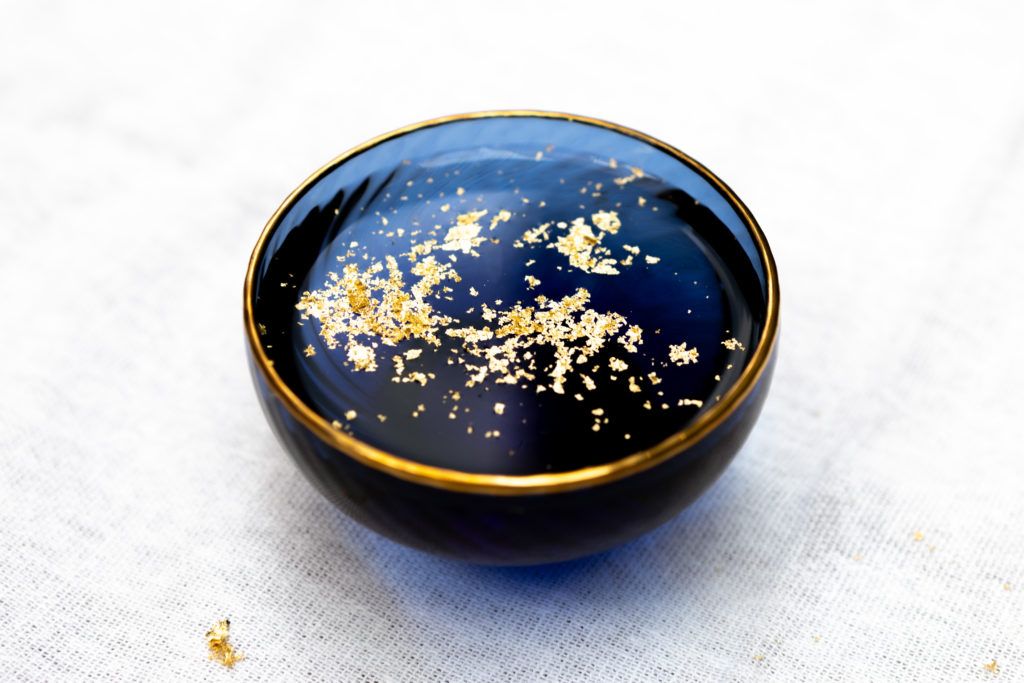More than just a fair-weather bar friend.
Words by Jessica Thompson. Images by Sherry Zheng

The Japanese have a charming aptitude for assigning esoteric phrases to everyday occurrences: the water between sips of sake isn’t just a glass of water, it’s yawaragimizu — literally, ‘softening’ or ‘soothing’ water, to soften both your level of intoxication and any potential hangover. The feeling of rejuvenation from a walk in the forest is shinrinyoku. Sunlight filtering through tree foliage is komorebi. The crispy rice at the bottom of cooked rice is not simply crispy rice, but ‘okoge’, a beloved relic from a time when rice was cooked in an iron pot and then the crispy bottom layer served with hot water and pickles; some modern rice makers offer an okoge setting. A dead branch or dried flower table decoration goes beyond the aesthetic, and into a deeper philosophical place of wabi sabi — an appreciation for beauty in the transience of existence.
This linguistic maneuver of denomination elevates the status of the ordinary into something requiring more thought. When it comes to drinking sake, there’s an appropriate lineup of terms for the different contexts and ways in which sake can be consumed.

Aruki-zake (walking sake). The simple adult pleasure of walking along a street, strolling through a park, waiting in a line, sitting on a bench by a river, walking from the train back home with a refreshing alcoholic beverage in hand.
Hanabi-zake (fireworks sake). Sake consumed watching the fireworks in summer. Many special-release summer sake bottles feature labels emblazoned with hanabi (literally, “fire flowers”).
Hanami-zake (cherry blossoming-viewing sake). The custom of celebrating cherry blossom season by sitting or hosting frivolities under the blossoms has ancient roots in Japan, but was popularised by Hideyoshi’s lavish hanami parties from the late 1500s, replete with aristocrats, friends, family, mistresses, entertainers, artists, and revellers totalling more than 1000. The birth of tea is thought to be a serendipitous moment when the empires of the time (Emperor Shen Nung) sipped his cup of hot water after some wayward tea leaves had floated serendipitously into it; this could also be the likely origins of hanami-sake.
Hashigo-sake (ladder sake). A bar crawl, literally “climbing the rungs of a ladder”.
Hesozake (belly button sake). Eating sushi from the naked skin of a bedroom accomplice may be considered the pinnacle of Japanese cuisine-influenced foreplay, but slurping nihonshu from a navel could easily rival this.
Hirezake (fin sake). Warm sake that is served with a charcoal-grilled or blow-torched fin of fugu, Japan’s deadly pufferfish. The smokiness infuses the sake, providing an intense musty and savory edge to the clean-tasting booze. It is thought this practice was a post-war tactic to mask the poor-quality sake that was on the market at that time. You’re most likely to find it in the Kansai region (Osaka, Kyoto) of Japan during winter, when fugu is in season. It’s considered an aphrodisiac, as most things coming from deadly or ugly animals and plants seems to be.
Kanpai-zake (cheers sake). The sake used for a kanpai to kick-off a meal or get-together.
Kikizake (sake tasting). Kikizake is to taste and compare many kinds of nihonshu, and if you do it for a living, you’re a kikizashi — sake sommelier.
Kinpaku-sake (gold sake). Exit stage right golden Cristal and Armand de Brignac, and enter stage left kinpaku sake. This is a bottle or cup of sake with flecks of gold leaf adrift. Drink it to celebrate a special occasions, or drink it to make an occasion.
Mizore-zake (frozen sake). A summer specialty, this is essentially a sake slushie — although technically, it’s not frozen but ‘supercooled’, so the result is a sherbet-like texture.
Momiji-zake/ koyo-zake (autumn leaf-viewing sake). Sake to be drunk while observing the fiery spectrum of maple leaves changing colour in autumn.
Mukae-zake (‘welcome back’ sake). The English-speaking world has the “hair of the dog” (an truncation of the “hair of the dog that bit you”, from a time when the best cure for being bitten by a rabid dog was thought to apply the same dog’s hair to the wound). Japan welcomes you back.
Nezake (sleep sake). A nightcap.
Tamagozake (egg sake). Like a Japanese eggnog, this is thought to be a cure for a winter cold. Whisk an egg with about a couple of teaspoons of sugar until fluffy. Warm 180ml sake, whisk the sake slowly into the eggs so that it doesn’t set. Reheat a little to taste.
Tsukimi-zake (moon-viewing sake). The sake drunk observing the autumn solstice full moon of September and October, to admire the moon’s clarity and brightness in the clear skies of that time of year, and to pray for a bountiful season of crops. This is often accompanied by tsukimi dango and wagashi (traditional Japanese sweets) shaped like rabbits. While the West believes there’s a man in the moon, Japanese folklore believes it’s a rabbit; and that the moon is not made of cheese, it’s made of mochi, and the rabbits work hard pounding this mochi—or so the story goes. Something to think about while you sip your tsukimi-sake.
Wakame-zake (seaweed sake). When sake is poured into the valley of a woman’s crotch as she lies with her legs held together, it is thought that her pubic hair floating through the sake is said to resemble wakame in the ocean. This works especially well in a country known for embracing bush. A compelling reason for delaying that wax.
Yukimi-zake (snow-viewing sake). Japan is famed for its abundant falls of fresh powder #japow, and what better way to appreciate it than with a toast of winter sake—especially if you’re fresh from a steaming onsen. Winter is the new-season sake, it’s freshly pressed, and known for its rich umami qualities.
Zakeburo (sake-buro, bath sake). Sake is high in amino acids, which has a moisturizing effect on the skin, as well as improving blood circulation and joint mobility. Worth parting with 1–2 cups of good-quality sake into a 38–40℃ bathtub for!

